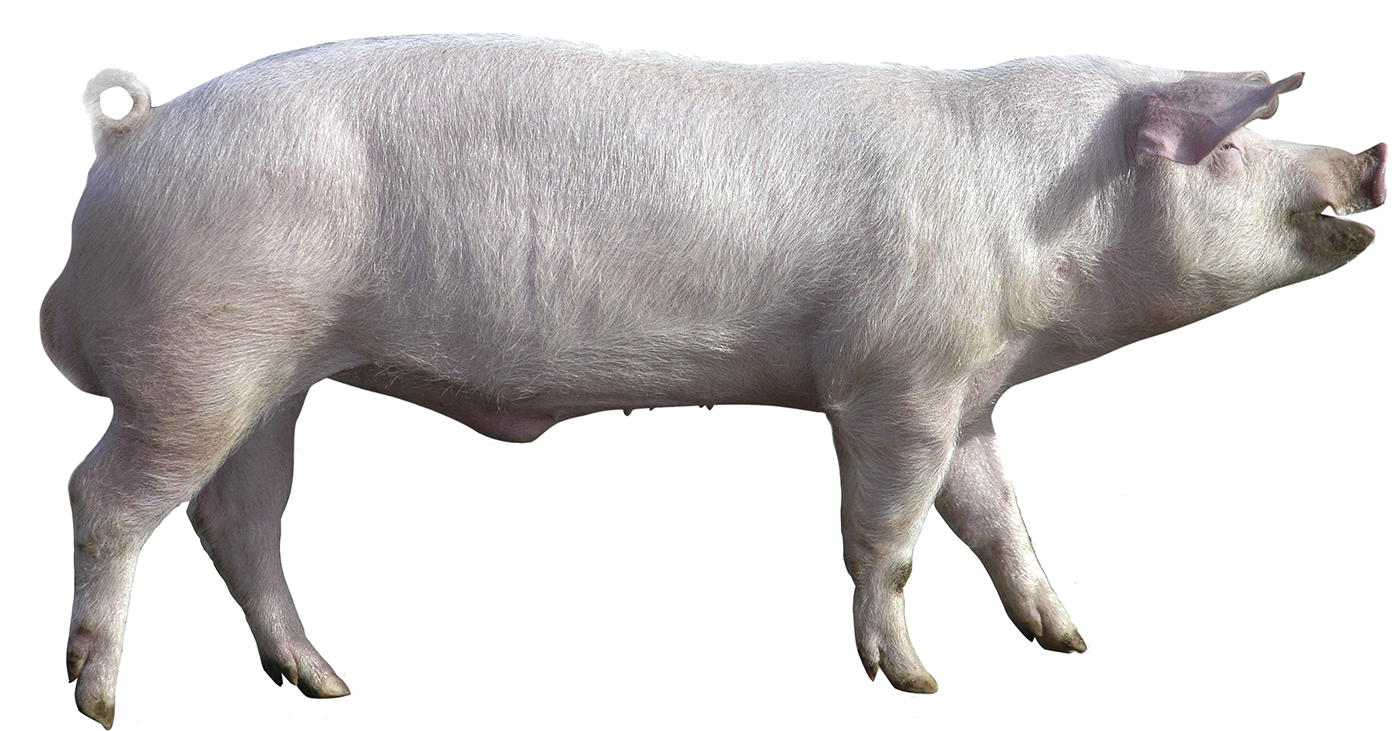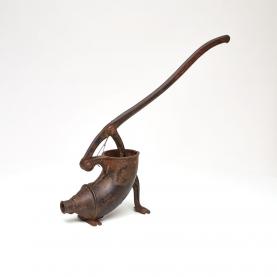Pig
Pork is the most widely-produced meat in the world, with over half produced in China. Pigs are reared outdoors, in piggeries or in piggeries with access to the outdoors. Pigs are fattened for six to eight months. Like their wild boar ancestors, they are omnivores. They are fed with cereals and by-products from the processing of milk and oilseeds.
A mixed reputation
Pigs were domesticated in various regions of Asia and Europe around the 8th millennium BCE, after dogs, cattle and sheep. Unlike the latter, pigs are sedentary as they do not move to summer pastures. Their domestication occurred at the same time as humans stopped being nomadic. They were ideal pets for the Ancient Greeks and Romans and used to live in the home but, by the Middle Ages they were viewed with increasingly mixed feelings. On the one hand, since sows produced large litters of between eight and twelve piglets, they symbolised fertility and prosperity. On the other hand, pigs represented greed and filth, as they loved wallowing in mud and spent their time looking for food or eating.
Reared outdoors, in piggeries or a mixture of both
Pork is the most widely-produced meat in the world, over half of which is produced in China. Subsistence and industrial farms are on the increase, especially in countries with high economic growth. Pork is distributed everywhere other than in regions where it is not eaten for cultural or religious reasons.
There are three farming systems in Switzerland: outdoor, in piggeries or mixed (in piggeries with outdoor access). Farmers look after the pigs’ needs to ensure healthy growth, the key profitability factor. Pigs live in groups but, to avoid fights, they move away from each other when looking for food. They spend their time scratching, digging and rooting around, so there needs to be a deep layer of litter in the pigsties. They also need room to move around and a rest area with a warm, dry surface. Piggeries have bright, wet, well-ventilated and fairly cool areas for pig droppings. Like their wild boar ancestors, pigs are omnivores, which makes them easier to feed compared to other livestock. They are mainly fed with feed grain and by-products from food-processing (dairy products, whey, residue from harvesting seeds and oil production).
Fertility, prosperity and diversity
Sows are ready to breed by the age of six months. The gestation period is three weeks and three days. Young sows have litters of eight to ten piglets, while older sows may have between ten and twelve. Young males are castrated after birth (within the first fortnight), as their meat tastes unpleasant when they reach about 80 kg. A piglet weighs around 1.5 kg at birth. Young male piglets already weigh 20 kg at the age of ten weeks. Five or six months later, they weigh 100 kg and are ready to be slaughtered at an abattoir or by a traditional butcher. In terms of which parts are edible, as Brillat-Savarin said, “Every part is the best part!” You can eat the shoulder, rump, neck, tenderloin, belly, ribs, thighs, shank, trotters, hocks, head, fat and even the tongue and liver. Pigs’ intestines are also used to make sausages.
There are 4 main breeds of pig farmed in Switzerland:
The Large White, maternal line (characterised for its high fertility): white, upright ears, top breed;
The Large White, paternal line (characterised by its fattening performance and high meat yield): white, upright ears, boar for reproduction of porkers (pigs reared for meat production);
Landrace: white, drooping ears, breed in decline;
Duroc: reddish brown, they are crossed with white sows to produce pigs fattened for eating (porkers).
AGENCE D’INFORMATION AGRICOLE, 2010. Du lard et du cochon. Lausanne : AGIR | Agence d’information agricole.
ECOMUSÉE DE LA BRESS, 1996. Du lard et du cochon. Pierre-de-Bresse : Ecomusée de la Bresse.
FOOD AND AGRICULTURE ORGANIZATION, DATE?. Le secteur porcin., Food and agriculture organization [en ligne]. [Consulté le 10 septembre 2015]. Disponible à l’adresse : http://www.fao.org
GUTZWILLER, Andreas, 2012. Le lait de vache facilite la transitions alimentaire chez les porcelets sevrés [en ligne]. Liebefeld : Station de recherche Agroscope. [Consulté le 11 septembre 2015]. Disponible à l’adresse : http://www.agrarforschungschweiz.ch
PROVIANDE, 2004,. La viande. Tout ce qu’il faut savoir sur la viande. Thoune : Éditions Weber.
STATISTIQUES SUISSES, Production et revenus. Production animale, Statistiques suisses [en ligne]. [Consulté le 11 septembre 2015]. Disponible à l’adresse : .
VERROUST, Jacques, PASTOUREAU, Michel, BUREN, Raymond, 1987. Le cochon. Histoire, symbolique et cuisine. Paris : Sang de la terre.




